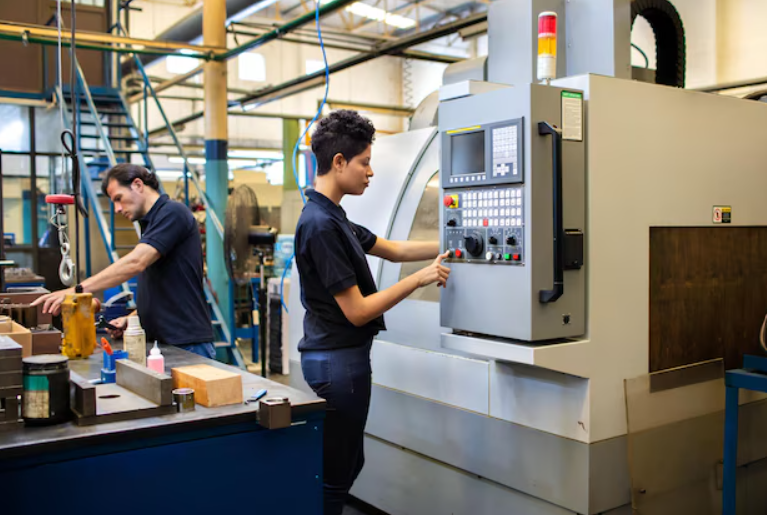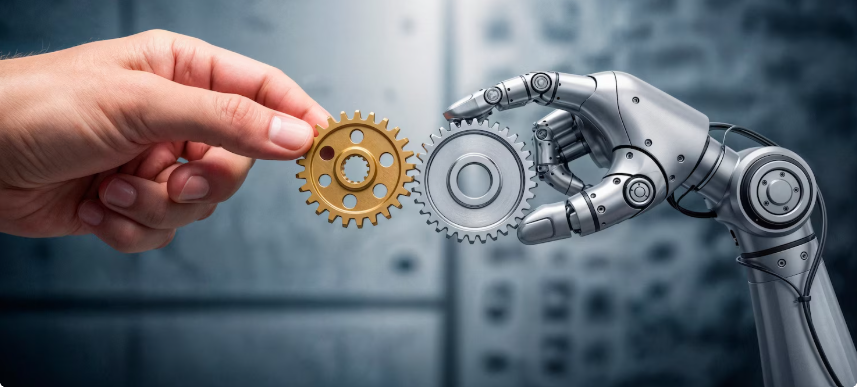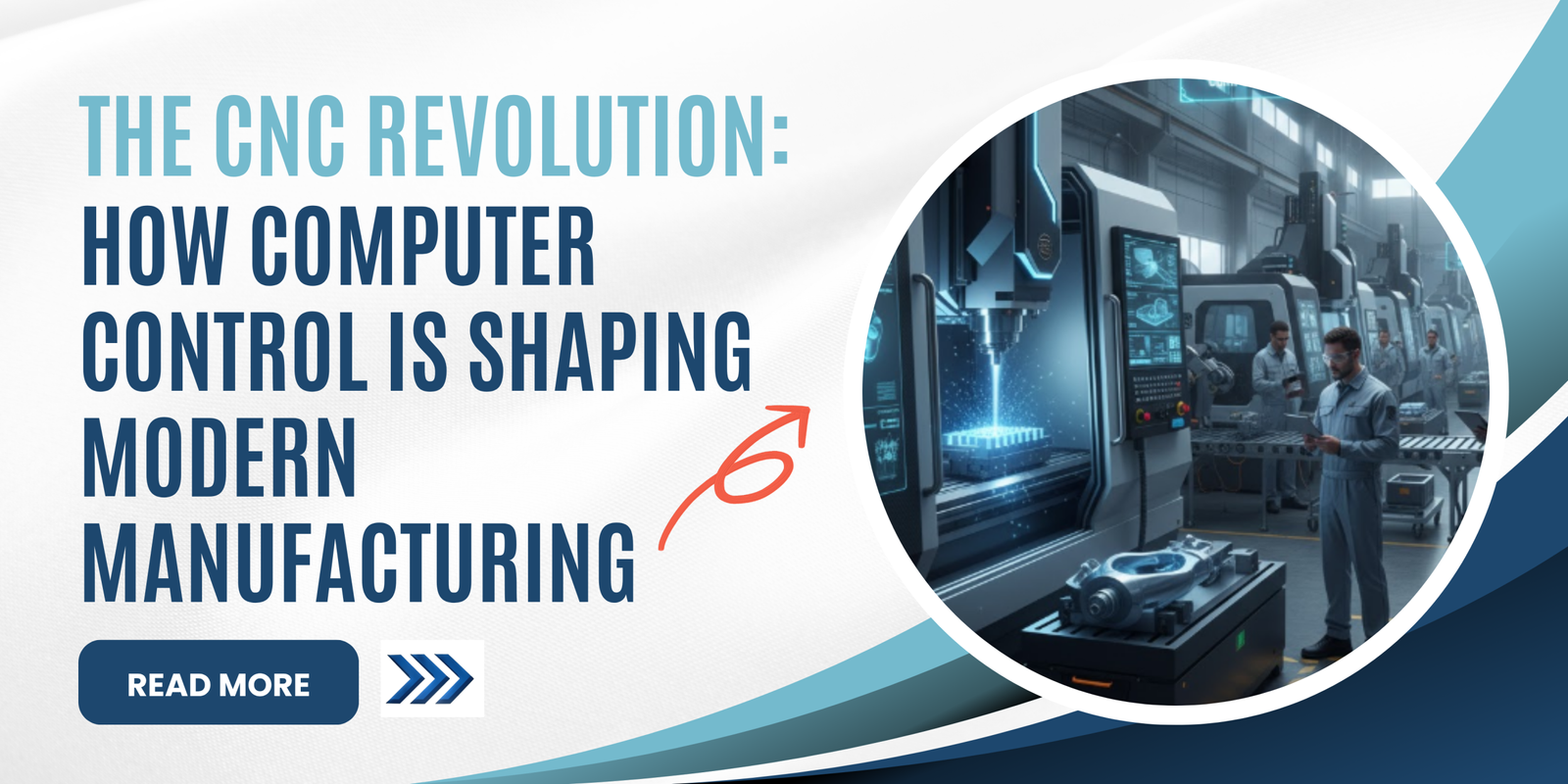CNC Revolution
The industrial landscape has been perpetually reshaped by technological advancements. More than just an incremental improvement, the advent of the CNC revolution marked a true transformation of manufacturing from a labor-intensive, often inconsistent craft into a highly precise, automated, and incredibly versatile science. This shift has not only boosted efficiency and reduced costs but has fundamentally redefined what is possible to produce, driving innovation across nearly every sector of modern industry.
From Manual Labor to Digital Precision: A Brief History
Before the advent of CNC, we were all highly dependent on skilled machinists operating manual lathes, mills, and drills. While these craftsmen could produce incredible work, their output was limited by human speed, stamina, and the inherent variability of manual operation.
The true revolution ignited with the integration of computers, giving birth to Computer Numerical Control (CNC) in the 1970s. This allowed programs to be stored, edited, and executed directly by an onboard computer, opening the door to unprecedented flexibility, precision, and automation.
The Core Principles of CNC Machining
At its heart, CNC machining involves a computer interpreting a digital design file and translating it into a series of commands (G-code and M-code) that control a machine tool. This machine then precisely removes material from a workpiece to create the desired part.
Key principles include:
- Digital Design: Parts are designed in CAD software, allowing for intricate geometries and precise specifications.
- CAM Software: CAM software translates the CAD model into toolpaths and machine-specific instructions.
- Automated Control: The CNC controller executes these instructions, driving motors to move the cutting tool and/or the workpiece along multiple axes.
- Material Removal: Various cutting tools remove material layer by layer or by shaping the raw stock.
The Unrivaled Advantages of CNC in Modern Manufacturing
The widespread adoption of CNC is a testament to the myriad benefits it brings to the manufacturing floor.

Unparalleled Precision and Accuracy
- Tight Tolerances: CNC machines can achieve incredibly tight tolerances, often down to micrometers, far surpassing what is consistently achievable by manual methods. This is particularly critical for industries such as aerospace, medical, and automotive, where component fit and function are paramount.
- Repeatability: Once programmed, a CNC machine can produce thousands or even millions of identical parts with virtually no variation. This consistency is crucial for mass production and the manufacture of interchangeable parts.
Enhanced Efficiency and Speed
- Automation: CNC machines operate autonomously once programmed, reducing the need for constant human intervention. This frees up skilled labor for more complex tasks, such as programming, maintenance, and quality control.
- Faster Production Cycles: Automated tool changes, rapid traverse rates, and optimized toolpaths significantly reduce cycle times compared to manual machining.
- 24/7 Operation: With minimal supervision, many CNC operations can run continuously, maximizing output and reducing lead times.
Versatility and Complexity
- Complex Geometries: CNC allows for the creation of intricate and complex shapes that would be impossible or prohibitively expensive to produce manually. This enables engineers to design parts optimized for performance rather than manufacturing simplicity.
- Multi-Axis Machining: Advanced CNC machines can move the tool and/or workpiece simultaneously along multiple axes, allowing for the machining of highly complex, organic shapes in a single setup, reducing errors and saving time.
- Material Agnostic: From metals (aluminum, steel, and titanium) and plastics (Delrin, acrylic, and nylon) to composites and wood, CNC machines can be adapted to cut a vast array of materials.
Cost Reduction
- Reduced Labor Costs: Automation lowers the direct labor hours required per part.
- Minimized Waste: High precision reduces scrap material due to errors. Optimized toolpaths can also be designed to conserve raw material.
- Lower Setup Times: Modern CNC systems, especially with quick-change tooling and fixturing, can transition between different jobs more rapidly.
Impact Across Industries
The “CNC Revolution” has left no corner of modern manufacturing untouched.
- Aerospace: Production of lightweight, high-strength components for aircraft and spacecraft, requiring extreme precision and exotic materials.
- Automotive: Manufacturing engine blocks, transmission components, chassis parts, and intricate molds for plastic injection.
- Medical Devices: Creation of surgical instruments, implants (e.g., knee and hip replacements), dental prosthetics, and intricate diagnostic equipment.
- Electronics: Fabrication of precise housings, connectors, and heat sinks.
- Consumer Goods: Production of molds for plastic products, custom enclosures, and high-quality components for appliances and gadgets.
- Tool and Die: Manufacturing molds, dies, and fixtures with unparalleled accuracy for other manufacturing processes.
The Future of CNC: Integration and Intelligence
The CNC revolution is far from over. Future trends point towards even greater integration, intelligence, and connectivity.

- Industry 4.0 and Smart Factories: CNC machines are becoming key components of interconnected smart factories, communicating with other machines, sensors, and central control systems to optimize entire production lines.
- Artificial Intelligence and Machine Learning: AI will increasingly be used to optimize toolpaths, predict tool wear, identify anomalies, and even adapt machining parameters in real-time for improved efficiency and quality.
- Additive Manufacturing (Hybrid Machines): The convergence of subtractive (CNC) and additive (3D printing) manufacturing in hybrid machines allows for the creation of incredibly complex parts with internal features, followed by precise finishing.
- Advanced Robotics: Integration with robotic arms for automated loading, unloading, and inspection further enhances the autonomy of CNC operations.
- Cloud-Based Manufacturing: Remote monitoring, programming, and predictive maintenance through cloud platforms will become more common, offering greater flexibility and data analysis capabilities.
Conclusion
The CNC revolution has fundamentally reshaped modern manufacturing, ushering in an era of unprecedented precision, efficiency, and versatility. By bridging the gap between digital design and physical production, CNC technology empowers industries to create complex, high-quality products faster and more cost-effectively than ever before. As Anand Engineering Corporation moves further into the age of Industry 4.0, the continued evolution of CNC will undoubtedly remain a cornerstone of innovation, driving the next generation of industrial progress and enabling the creation of products we can only begin to imagine today.

